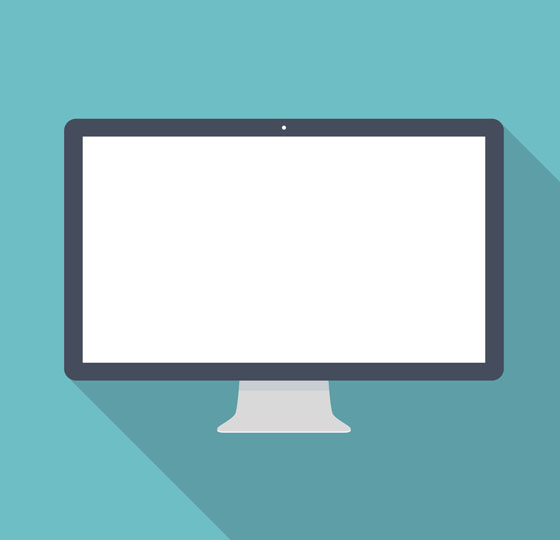EnlightenEd
Wireless Displays- The Next Big Thing On Campus

In a typical college classroom or study area, displays and TVs have replaced whiteboards and markers as the easiest way for students and professors to share information and collaborate with each other. For a long time, these displays were wired to desks or perhaps a podium at the center of a room. Anyone wishing to share something from a laptop or device had to connect to the display from that one position in the room.
But increasingly, colleges are beginning to experiment with wireless display technology that allows professors and instructors to walk around freely with their devices and lets students share videos and projects with the rest of the class.
If you think about it, this is really just the next logical step. Smartphones and tablets have become so common on campuses that we don?t think twice about seeing students operating one or more devices. Wireless display technology is simply capitalizing on the fact that students and professors have their projects and data on hand, and want to be able to share them quickly and easily.
Wireless display technology offers plenty of benefits that help simplify and enhance the learning experience. WiDi technology eliminates the need for cables, and allows students and instructors to move freely, or stay exactly where they are. There?s no need to change seats or exchange one laptop for another. This in turn reduces expenses for cabling and switch equipment.
But one of the real benefits of WiDi technology is that it improves collaboration and makes it easier than ever for students to share videos, pictures, presentations, and any other information critical to their studies. This is important in the classroom, but other areas like libraries and study rooms can benefit from the same technology. Students gathering together to study can easily compare notes, watch presentations, or collaborate on group projects?without the hassle of constant plugging and unplugging from wired displays. It even gives students and instructors the convenience of dual-screen multitasking. They can now stream a video from their smartphone, and while it?s playing, open email or search the internet.
With WiDi technology, colleges and universities can add another component to the technological innovations that are driving education. At N2N, we understand the complex relationship between technology and the higher education world. More technology can certainly be a boon for colleges, but it can also create problems as more and more apps and systems are added each year. That?s why we?ve created the N2N Integration Cloud specifically for higher education institutions. The NIC integrates all your existing apps and systems, and acts a translator, providing seamless and secure data transfers across all systems. Adding new apps is easy, and the NIC can be scaled up or down depending on the needs of your particular institution.
If you?d like to learn more about the NIC and the intersection of technology and education, contact N2N Services today.
More EnlightenEd Entries
EnlightenEd
Weighing The Pros and Cons of Digital Textbooks

Ask just about any college student what bothers them about their classes, and you?re sure to hear about their textbooks. It?s easy to see why. College textbooks can be incredibly expensive. Some books cost hundreds of dollars, and just one semester?s worth can easily run over a thousand dollars. Books can be bought used, but publishers change editions regularly, making an old textbook a hassle to use. In many cases, students are allowed to rent textbooks, and return them at the end of the semester, but this isn?t always an option, and most students don?t get away unscathed by the prices at the start of each semester.
Many students complain that they bought a book that they hardly used in class, and this leads to college students waiting to buy their books until they?re sure they need them?and already behind in the class. So where do digital textbooks fit into all of this? At first glance, they seem like the ideal solution, but let?s take a closer look and explore the pros and cons of the digital textbook revolution.
Pros
- Digital textbooks allow for an interactive learning experience. Many companies offer links to videos and unique source material, and even interactive diagrams and quizzes.
- Digital textbooks are also easy to use. Instead of flipping through a four hundred-page book, students can use search features to quickly find what they?re looking for.
- They also add the benefit of superior portability. Carrying around four massive textbooks is now as easy as sticking your iPad in your backpack.
- One of the most talked about aspects of digital textbooks is the pricing. You might think that digital versions of textbooks would be much cheaper?after all there is no cost for printing or shipping?but unfortunately this isn?t always the case. Combined with the cost of the tablet or e-reader, the price difference can end up being a wash.
Cons
- Interactivity is great, but not all digital textbooks come with these features. Some are simply page scans, and many students still prefer books that allow you to use ?cognitive mapping??developing cues to remember where you saw the information in the first place.
- Reading on a tablet is also fraught with potential distractions for students. That same tablet holds all their apps and social media that many students prefer not to be tempted by.
- It seems that some students also just like the physical aspect of books. Being able to highlight and write directly on paper is preferable for some, and reading on e-readers can interfere with intuitive navigation of the text.
- Lastly, while it?s relatively hard to steal a mammoth print textbook from the bookstore, digital piracy of textbooks is a growing concern for publishers. With prices as high as they currently are, it can be tempting for students to illegally download their textbooks.
At N2N, we understand the complex relationship between technology and education, and we?re here to help your institution innovate and flourish. If you?d like to learn more about how Illuminate can push data to mobile devices, dashboards and wearables, contact N2N Services today.
More EnlightenEd Entries





